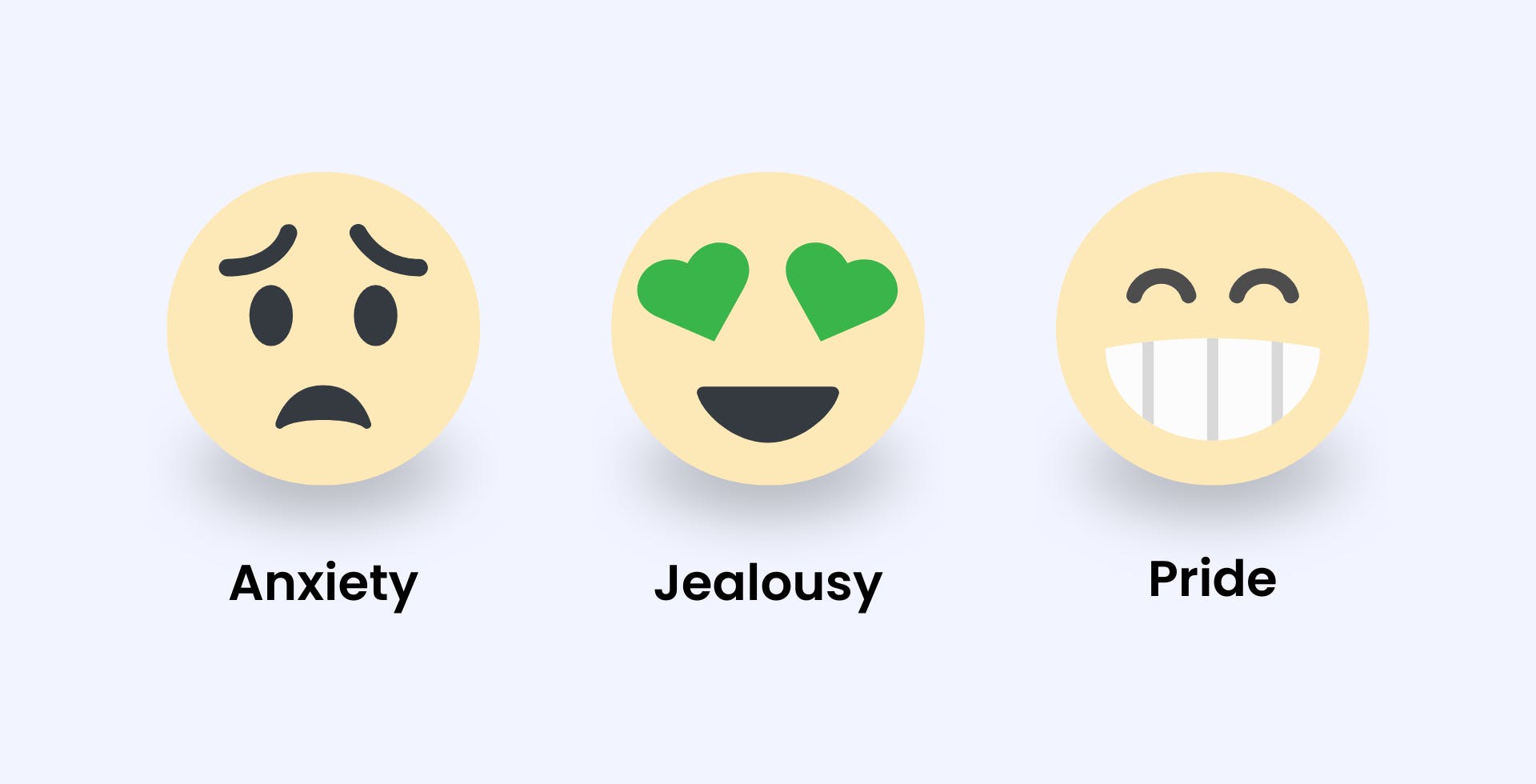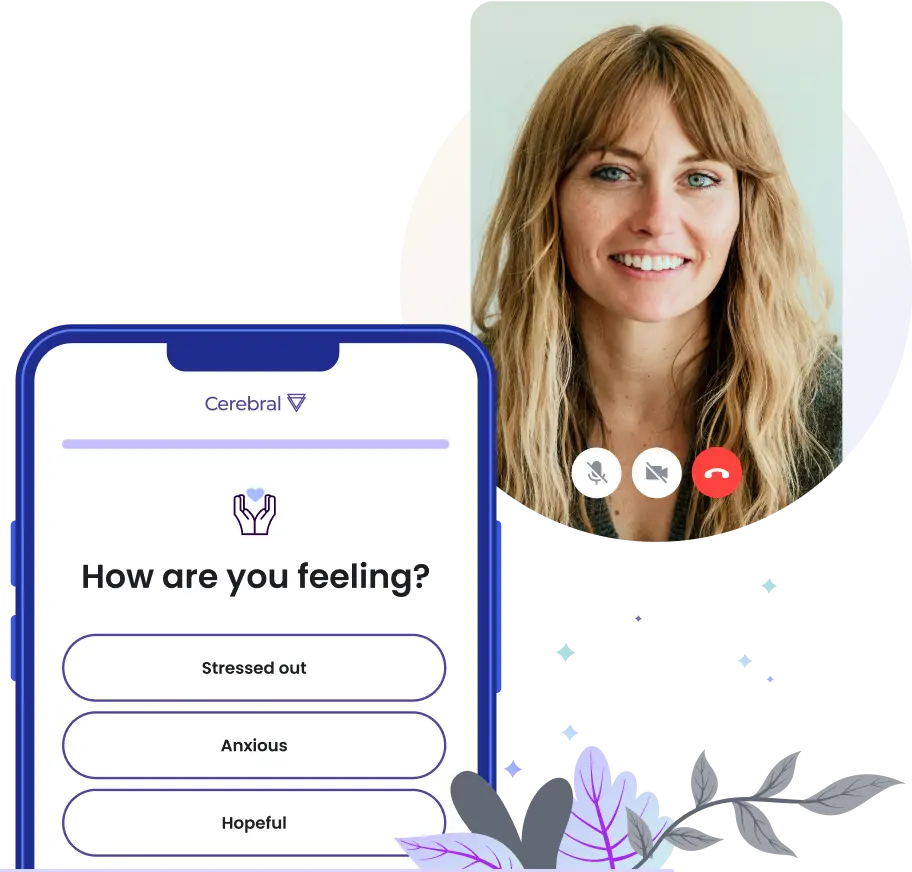Understanding and Addressing the Feelings Behind Anxiety

Anxiety touches everyone's life, acting as a natural response to excitement, change, uncertainty, and stress. But, this common feeling can cross the line from a temporary emotion to a more persistent anxiety disorder that requires attention.
Before seeking answers about how to tell if you have anxiety, it’s important to learn more about the feelings behind it. This can help you understand the difference between everyday feelings of anxiety and an anxiety disorder.
Learn how to recognize the underlying emotions behind anxiety, how to cope with those feelings, and how to determine when it might be time to seek help.
Is anxiety an emotion or a disorder?
It’s both. Anxiety is often described as a feeling of nervousness, apprehension, worry, or unease that can vary significantly in intensity, duration, and presentation. As a standard response to stress, feelings of anxiety are meant to alert us to help us prepare and pay attention.
As defined by the American Psychological Association (APA), anxiety is “an emotion characterized by feelings of tension, worried thoughts, and physical changes like increased blood pressure.”
Anxiety disorders go beyond ordinary nervousness or anxiousness and are characterized by a persistent and severe level of anxiety or fear. Anxiety is a component of several mental health conditions, particularly generalized anxiety disorder (GAD), panic disorder, and phobia-related disorders.
Symptoms of anxiety
Anxiety tends to manifest itself physically, emotionally, and behaviorally, often with a combination of symptoms. These may include:
- Physical symptoms of anxiety: Heart palpitations, chest pain, dizziness, shortness of breath, and stomach discomfort.
- Behavioral signs: Avoidance of situations that trigger anxiety, compulsive behaviors, and restlessness.
- Cognitive signals: Persistent, irrational thoughts and difficulties with concentration.
These symptoms can range in severity. If they’re disrupting your daily life and well-being, it’s a signal to seek professional help.
Types of anxiety disorders
There are various forms of anxiety conditions that individuals may encounter. Some of the most common include:
- Generalized anxiety disorder (GAD): Characterized by excessive, uncontrollable worry about everyday things.
- Social anxiety disorder (SAD): An intense fear of social interactions and a strong desire to avoid these situations.
- Panic disorder: Involves sudden and repeated attacks of fear that last several minutes or longer.
- Phobias: Excessive and enduring fear of a particular object, situation, or activity that typically poses no real danger.
These types of anxiety disorders can have both short-term and long-term effects on an individual's mental health.
What are primary and secondary emotions?
To understand anxiety, we need to differentiate between primary and secondary emotions. Primary emotions are the immediate response to an event and often serve as survival mechanisms.
Secondary emotions, on the other hand, are our reactions to the primary emotions, adding layers of complexity to our emotional experiences.

Primary emotion
These are the basic emotions that all humans experience and are thought to be at the core of other more complex emotions. They include:
- Fear: The response to immediate, real danger.
- Anger: Feeling threatened and the impulse to fight back.
- Sadness: Typically in response to a loss or a perceived unattainable goal.
Happiness: The result of achieving a goal or of pleasant stimuli.

Secondary emotion
Instead of being the result of a specific experience, secondary emotions are triggered by the way we interpret our primary emotions. They may include:
- Anxiety: A secondary response to fear, associated with anticipation of future threats.
- Jealousy: A response to fears of loss.
- Pride: A response to feelings of achievement.
Understanding these layers can help manage a complex emotion like anxiety effectively.
Understanding the emotions behind anxiety
Anxiety usually arises from two primary emotions: fear and uncertainty. Sometimes the triggers for anxiety are obvious, such as before an exam or big meeting. But other times, the source of anxiety can be more elusive, like a vague sense of unease when facing daily routines or the persistent worry over hypothetical scenarios that may never occur.
By learning to identify the core emotions that drive our anxiety, we can address them more directly.
Fear
Perhaps the most basic and most powerful human emotion, fear is the response to an immediate, real threat and is a critical survival mechanism. It's what triggers the body's fight-or-flight response, preparing us to face, flee from, or freeze in the midst of a threat.
Anxiety can stem from an overactive fear response, leading to a persistent, irrational fear of a specific object, activity, or situation.
Uncertainty
Uncertainty can be a trigger for anxiety when the future is unclear, our safety is in doubt, or we’re unsure of others’ perceptions.
This can lead to a chronic state of anxiety, as life is often unpredictable. Learning to deal with uncertainty is a crucial skill for managing anxiety.
Addressing the feelings of anxiety
Once you’ve identified the core emotions at the root of your anxiety, the next step is to address them. This process may require the help of professionals, but there are several strategies you could try on your own.
Feel your feelings
The first step in addressing any emotion is to allow yourself to feel it fully. This can be difficult with emotions like anxiety, which can be uncomfortable and overwhelming.
Why this is important: By acknowledging and allowing yourself to experience anxiety, you can begin to understand it and its triggers more clearly.
Identify your triggers
Determine the specific triggers that lead to anxiety for you. Is it a particular situation, person, or thought? Understanding what sets off your anxiety can help you prepare for and cope with those triggers more effectively.
Free downloadable resource: Trigger Log Worksheet

Adopt coping strategies
Developing healthy anxiety coping strategies can make a significant difference in managing either the feelings or a disorder. These can include:
- Deep breathing: Using techniques like diaphragmatic breathing can calm your body's stress response.
- Mindfulness and meditation: Practices that train your mind to focus on the present moment may diminish the power of anxious thoughts.
- Regular exercise: Physical activity can help reduce anxiety by releasing tension and stress.
- Healthy eating and sleep habits: A balanced diet and adequate rest contribute to overall well-being, which can help manage anxiety.
These self-help practices serve as valuable tools to relieve anxiety for both those who are feeling anxious and those with anxiety disorders.
However, it's important to recognize when these strategies alone aren’t effective and when more specialized support is needed. If your symptoms become increasingly more intense, seeking professional help can help you address anxiety from multiple angles.
Try therapy
Therapy, particularly cognitive-behavioral therapy (CBT), can teach you to recognize and change the thought patterns that contribute to anxiety. Whether you’re feeling anxious or have an anxiety disorder, a therapist can also work with you to find coping strategies that suit you.
When to seek help
If anxiety is significantly impacting your quality of life, it's important to seek professional help, as it could be an anxiety disorder. Whether through therapy, medication, or a combination of both, there are effective treatments available for anxiety or anxiety-related mental health conditions.
Online therapy and virtual medication management from Cerebral provide a convenient and proactive way to address symptoms of anxiety with the support of licensed professionals, all from the comfort of your home.
If you’re wondering how to tell if you have anxiety as a diagnosable mental health condition, you can complete our simple screening tool which will suggest the severity of your anxiety symptoms, ranging from normal to severe. Of course, a clinical diagnosis can only be done by a licensed professional after a complete evaluation.
By addressing the underlying feelings of anxiety and learning to cope with them effectively, you can take back control and live a calmer and more stable life. Take one of the first steps today by completing our free anxiety screening tool to see if reaching out to Cerebral is right for you.
Images by stefamerpik and yanalya on Freepik.
The information in this blog is provided as a general educational resource only, and is not to be used or relied on for any diagnostic or treatment purpose. This information should not be used as a substitute for professional diagnosis and treatment and does not create any patient-physician relationship between you and Cerebral. Please consult your health care provider before making any health care decisions or to get guidance about a specific medical condition.

Relationship Anxiety: Understand the Signs and Ways to Cope

Anxiety and Memory Loss

Experts Recommend Anxiety Screening for Those 19-65

Call 911 if you’re having a
mental health emergency
Text Home to 741-741 if you're in emotional
distress and need immediate support
Call or text 988 Suicide &
Crisis Lifeline. Chat service
is available at 988lifeline.org.